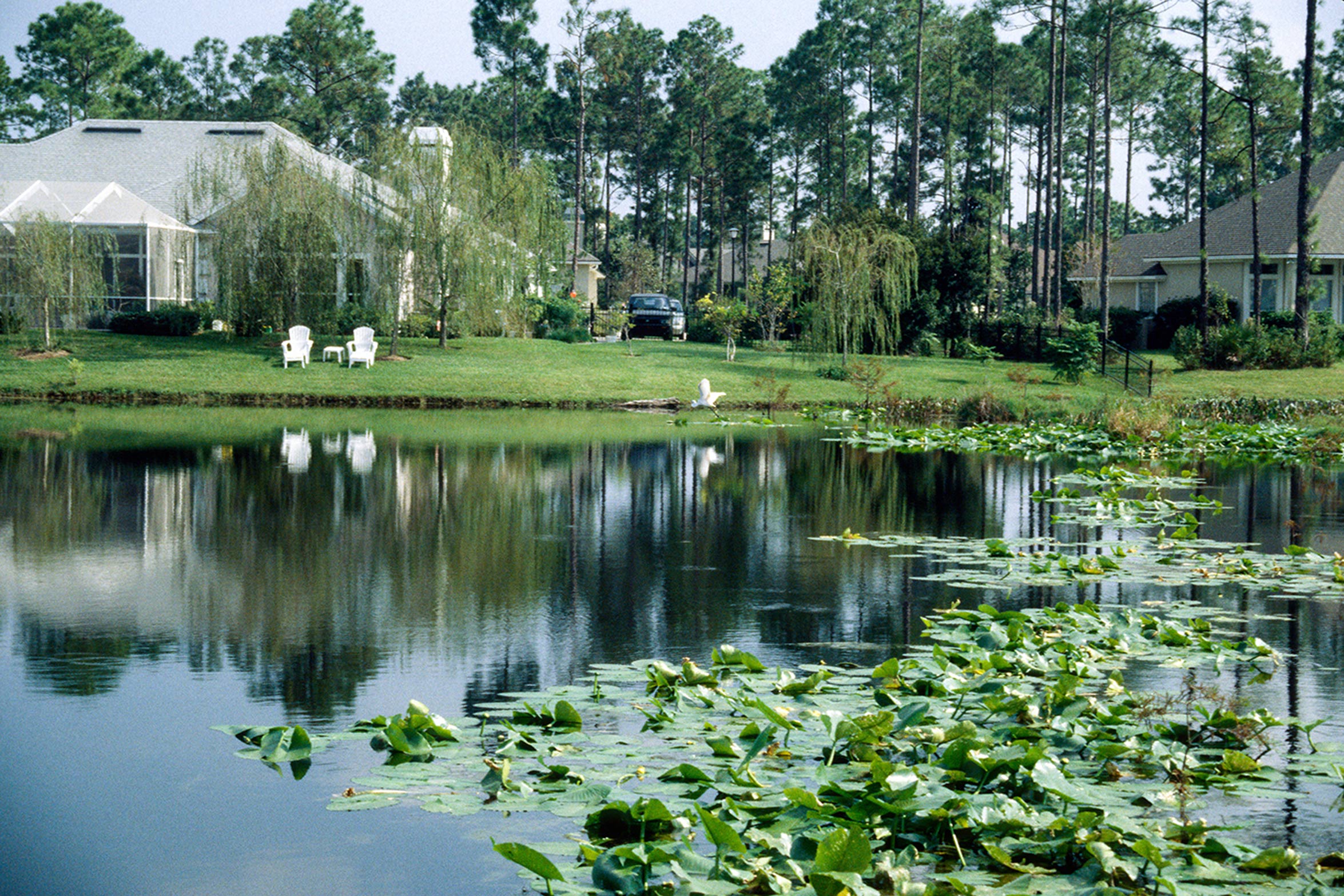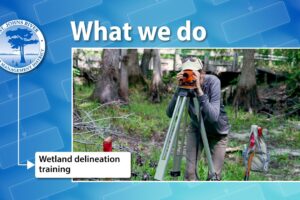Stormwater systems offer water quality and storage benefits
Sept. 3, 2020
The summer rains have returned — with more than 7 inches of rain on average in the last 30 days across the 18-county St. Johns River Water Management District. This rainfall brings with it a timely reminder of how important it is that our stormwater systems function properly in order to help provide stormwater storage and protect water quality.
These man-made systems are designed to mimic natural processes allowing sediments, chemicals, debris and other pollutants to settle to the bottom of the pond rather than flowing to our natural waterways. Without such a system, untreated stormwater runoff usually flows into the nearest body of water. This results in excess nutrients in the waterways which, under the right conditions, help feed algal blooms.
The District’s permitting program ensures that stormwater is managed on developed sites and that new drainage ditches or significant changes to existing ditches are coordinated regionally. The District and the Florida Department of Environmental Protection issue permits to install stormwater systems. After construction of permitted systems in residential areas, legal responsibility for maintaining these systems is typically passed to a homeowners’ association or property management company. Local governments also have a role as the primary entities responsible for land use planning, maintaining stormwater systems, implementing a community’s master stormwater plan and completing retrofit projects for areas built prior to the state’s stormwater rules.
Individually, it is vitally important that we make sure our own lawns and landscapes do not contribute excess nutrients and debris to the neighborhood’s stormwater system or nearby waterways. Homeowners can do this by keeping grass clippings and leaves out of the street ensuring the debris does not wash into storm drains, following manufacturer directions when using chemicals and fertilizer, and fertilizing sparingly and only where and when necessary.
We all have a role in protecting our water resources. We invite you to learn more about the importance of stormwater systems and the District’s core missions by visiting our website at www.sjrwmd.com/education/stormwater-systems. We also offer a downloadable fact sheet with background and tips for helping to prevent water pollution. And Community Association Managers: We now offer continuing education units through District-led training (visit www.sjrwmd.com/education/cam-training to learn more). Together, we can ensure that our shared water resources are managed responsibly and protect these priceless assets for the future.






